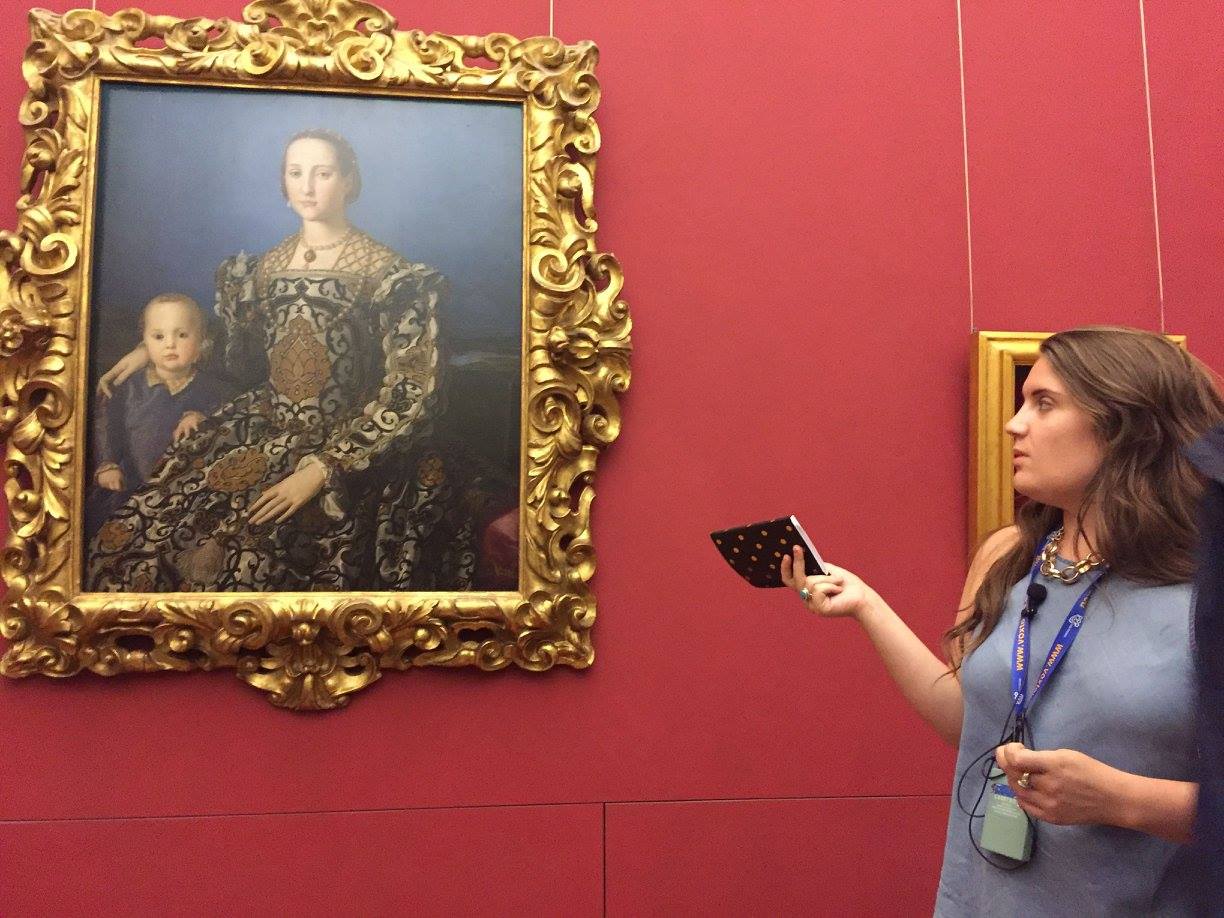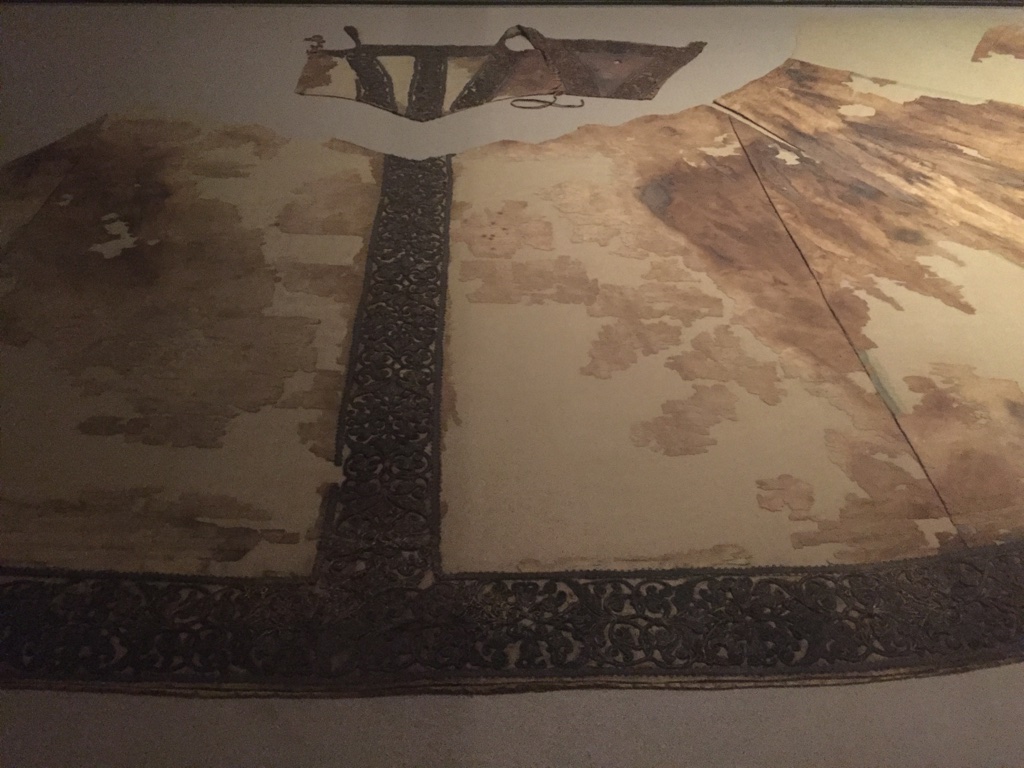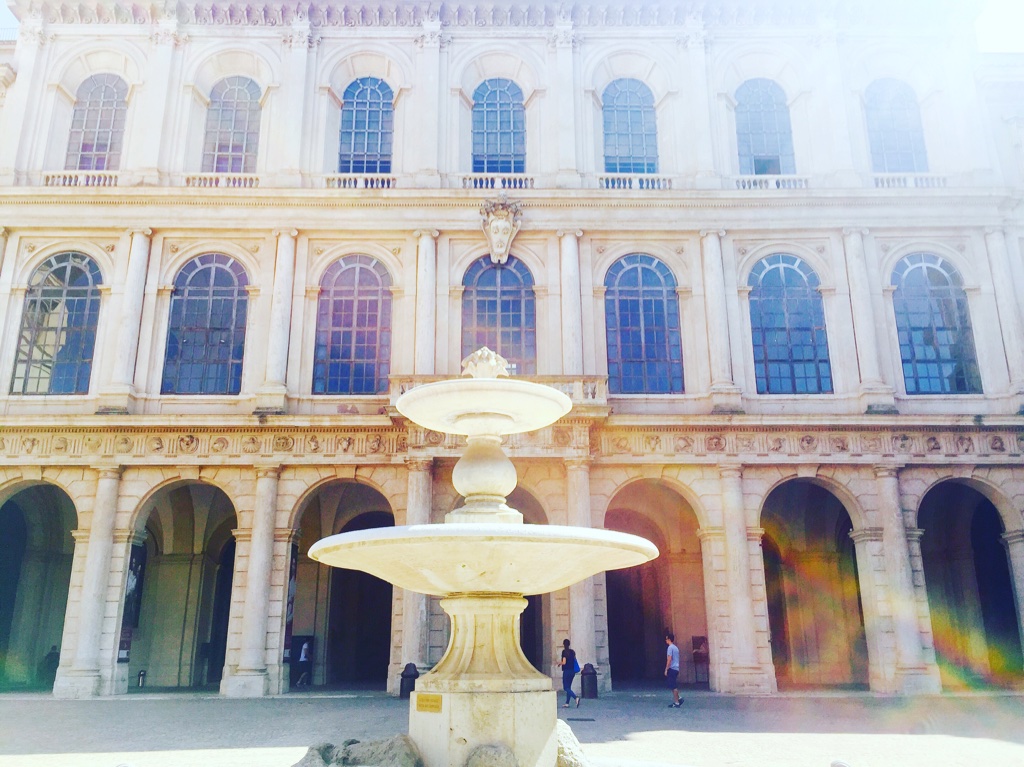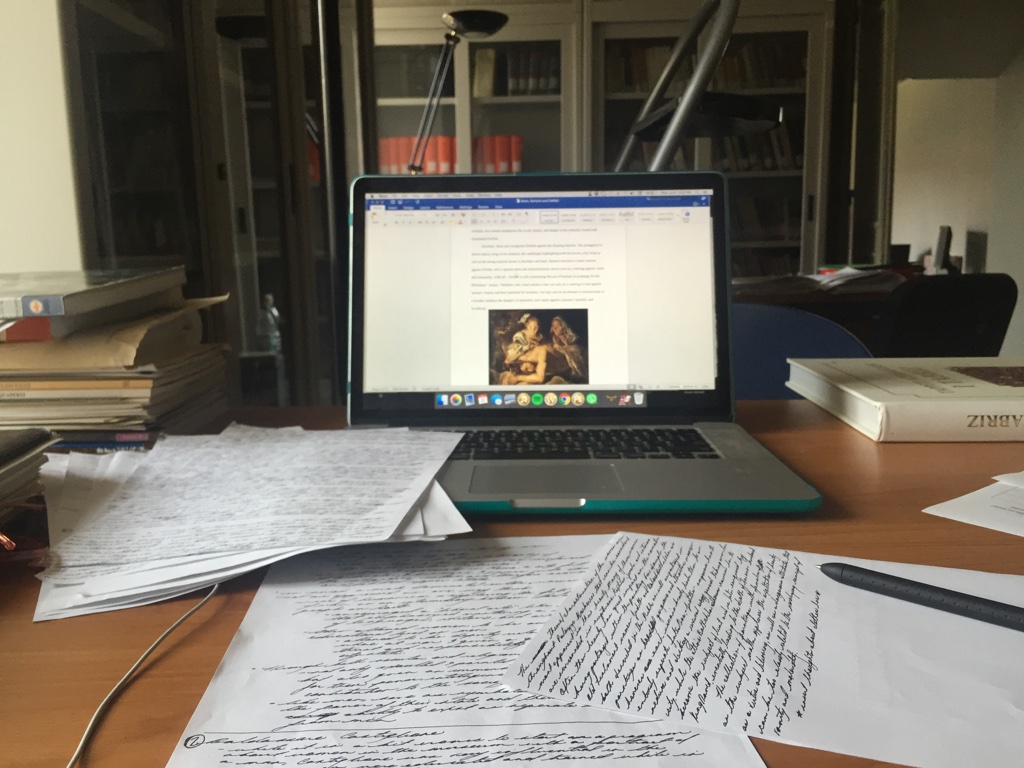
Clio Rom leads a tour at Florence’s Uffizi Gallery for U of A Rome Center students. Here, they discuss Botticelli’s Primavera (c. 1482). All photos courtesy Clio Rom.
Clio Rom, an honors art history junior with minors in Italian and gender studies, is studying the different ways that male and female artists depicted women for her honors thesis, titled “Sitting Pretty: The Depiction of Women and Women’s Fashion in Renaissance and Baroque Portraiture.” Last summer, thanks to the new Honors College International Research Grant, Clio was the first to fill a research residency at the National Museum of Antique Art, housed in Rome’s Palazzo Barberini. There she was able to take an especially close, daily look at the political and class symbolism embedded in the sumptuous fabrics and jewels adorning yesterday’s fashion icons. Trips to Milan and Florence afforded further opportunities, such as viewing the 450-year-old gown that clothed Eleanor of Toledo the first time she was buried.
1. Tell me about your research. Are you focusing on any female artists in particular?
There are a few different components to my research, different facets to my approach. The first would be, who are the women in these paintings, and what are they wearing, how are they positioned, how do they hold and pose themselves? And who is the one painting it, is the artist male or female? The main female artists I’m looking at, because there weren’t a lot back then, are Artemisia Gentileschi and Lavinia Fontana.
In the 1970s Laura Mulvey came out with the idea of the “male gaze,” that had to do more with cinema, and how men produced art “cinema” for male viewership, and I was wondering if this could be retroactively applied to Renaissance and Baroque portraiture. Turns out yes, a lot of the time, men created portraits of women particularly for men to look at and find pleasure, visual pleasure.
As for the fashion aspect of it, I have found and am still finding that the clothes in the portraits are not only realistic depictions, but also used for symbolic and propagandistic means. I’m still in the midst of discovering the different semiotics in the clothing, as well as tying that back to the political history of Italy, specifically Florence and Rome.
2. You were the first student to fill a research residency at the National Museum of Antique Art, housed in the Palazzo Barberini. What was a typical day like for you there?
When I arrived, they gave me free rein – what project do you want to do, here are the resources. So for the first two weeks I did spend a lot of time within the galleries, and searched for paintings that had thematic and stylistic connections. After that I selected 18 out of the entire museum and I began to research them one by one, because the Palazzo Barberini doesn’t have a specific, in-depth catalog. They only have a general catalog, just the name, date and provenance, with basic bibliography. So my job was to flesh out the catalog and descriptions for these 18 paintings. I called them le donne del museo – “the women of the museum.”

Clio with the painting that launched her research, Bronzino’s Portrait of Eleanor of Toledo and Her Son (ca. 1545).
3. Where else did you travel to conduct your research?
My first stop was Florence, to see a painting by Bronzino, The Portrait of Eleanor of Toledo and Her Son. It’s my absolute favorite painting in the world, what inspired me to start this honors thesis. Eleanor of Toledo was the wife of Cosimo I de’ Medici, and they were housed in Florence. So my trip to Florence was a way to discover more about Eleanor and her life at the Palazzo Pitti – that was her home. They have a costume and textiles museum there, and I saw the dress she was buried in. Yes! I have pictures of that. They took her out of her tomb in the 1800s and moved her, and later, when they moved that tomb, they took the dress off – they moved the tomb twice. It was important for me to see the way a dress was constructed and how it sat on a woman.

Eleanor of Toledo’s burial shroud, a relatively simple white satin gown worn over a crimson velvet bodice.
Eleanor was a style icon. She made changes in court fashion that were followed for 300 years. She came to Florence from Spain, where the color black was traditional to the Spanish court. It was unseen in Italy until she came, and then black and gold exploded. She wasn’t a supermodel, but she had the importance of a Kendall Jenner or Anna Wintour.
After Florence I stayed in Rome for a while and then I went to Milan; there it was more research by discovery. There weren’t a lot of secular portraits there, but I found similar textiles and styles of clothing in religious art. There are specific motifs and patterns that were popular with nobility and courtiers that are worn by the Virgin Mary and different priests. That led me to believe that specific patterns and specific motifs are associated with power structures in both secular and sacred art.
4. Did you find that female artists depicted clothing and ornament differently than male artists?
Yes. I think women were a little more truthful and accurate in depicting clothing – you know, “This is what I would have worn,” as opposed to a male, maybe painting a female in clothes to show “she looks pretty and attractive in this.” Women painted women in a more autobiographical and realistic way. I’m still exploring that, getting my feelers out and gathering more evidence.
By looking at portraits and paintings by male artists, I get a wider realm of lower and middle class clothing as well as noble clothing. Both female artists I studied were high status, so I’m seeing high status and noble fashion in their work, which is fine with me, because it’s a lot more beautiful and ornate.
Beyond the clothing, I found that women more successfully developed the psychology of their female sitters. Possibly because they able to relate, put themselves in their shoes, which I found very interesting.
5. Some might say that you could have conducted this research by looking at photos in books or on the web.
No! No photo, high def or not, will do a painting justice. There are details you cannot see until your nose is two inches away from the painting and the security guard is yelling at you. There’s also something about research in a museum, the “stumble upons” – there are paintings in the Palazzo Barberini that I had no idea existed, which have really informed my thesis. Especially looking at textiles and clothing, there are so many details that will pass you by, just looking at a LED screen.
And then there’s the Palazzo Barberini library and the art history library in Rome at the Palazzo Venezia – oh my gosh, it’s like the Dickson Street Bookstore on steroids! They have so many catalogs and sources in Italian and English and other languages. You have to see it to believe it, and understand that there are resources in Rome that aren’t available here.
Clio Rom’s faculty mentors are Consuelo Lollobrigida, a faculty member in the University of Arkansas Rome Center, and Lynn Jacobs, Distinguished Professor of Art History.
This interview has been edited and condensed.


